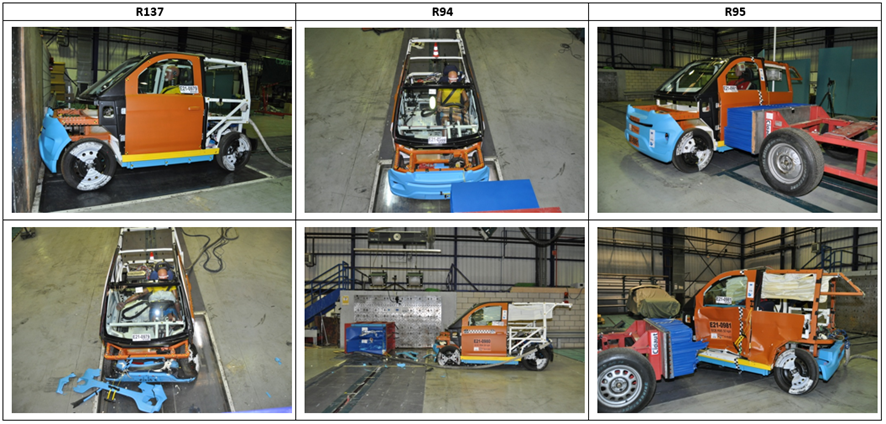Cidaut has led STEEL S4 EV European project for the last three years. The last activity of the project has been the evaluation of the crashworthiness and stiffness of the smart urban vehicle developed by STEEL S4 EV consortium, formed by IFEVS, Magnetto Automotive, Belgian Welding Institute, Lulea University of Technology and Sphera and led by Cidaut. The four prototypes built by IFEVS and Magnetto Automoyive in Italy have been sent to Cidaut’s facilities in Spain for testing. The first vehicle has been dedicated to stiffness measurement and fatigue testing. In a first stage, the torsional and bending stiffness of the vehicle have been measured complying with the results calculated by simulation and with the requirements of the project. After that and one million load cycles (equivalent to 250.000 km of hard driving) have been applied to the vehicle and the stiffness tests have been repeated again obtaining the same performance, so it can be conclude that the vehicle has resisted the fatigue test without any damage.

The destination of the other three vehicles have been harder, they have been used for different configuration of crash tests, two of them frontal and the third one lateral. All the tests made are in accordance with the current European regulation. In fact the tests performed have been, R137, full frontal crash against a rigid wall at 50km/h, R94, 40% off-set frontal crash against a deformable barrier at 56km/h, and, R95, lateral crash at 90º with a 950 kg vehicle running at 50km/h with a deformable barrier in the front.
The behavior of the structure has been totally satisfactory in the three crash test configurations, with a suitable behavior of the energy absorbing elements and with no intrusion of hard components inside the cabin. The bio-mechanic values measured in the dummies put on-board the vehicles are all of them inside the admissible parameters of the different regulations, with the only exception of chest depletion at R137 test. However, this will be solved with the use of a collapsible steering column in the commercial version of the vehicles.
The research leading to these results has received funding from the Research Fund for Coal and Steel under grant agreement nº800726.
